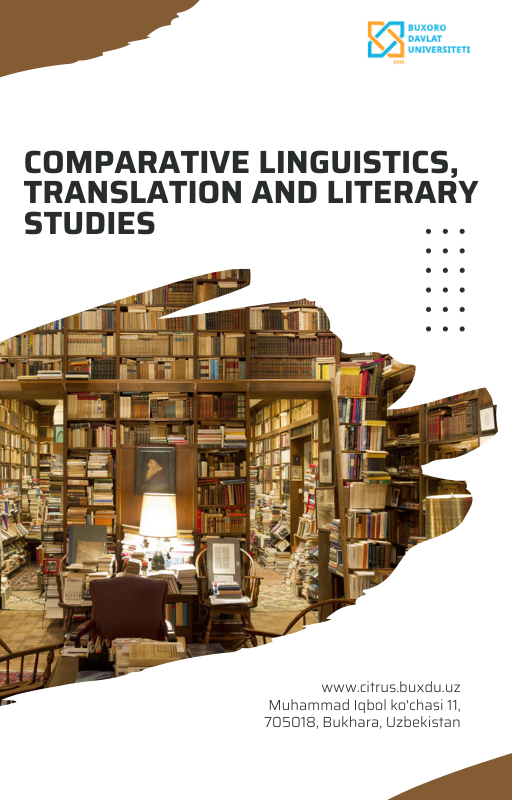Unleashing Potential Thriving with Efficient Autonomous Learning
Keywords:
Learner Autonomy, Innovative Teaching Methods, Training Strategies, Language Education, Educational ReformAbstract
Background: In the field of education, traditional teaching methods often overshadow the understanding of student learning processes. This paper explores how insight into effective learning techniques can enhance teaching strategies and promote autonomous learning, empowering students to take charge of their educational journey. Specific Background: In the context of increasing global interest in foreign language education, innovative classroom management strategies are essential. This is particularly relevant in Uzbekistan, where educational reforms emphasize autonomous learning as a key component of language education. Knowledge Gap: While the concept of learner autonomy is recognized, there is limited understanding of how it can be practically implemented to foster independent learning in diverse educational settings. Aims: This study aims to explore effective strategies for promoting autonomous learning in language education, focusing on how students can be encouraged to develop self-directed learning skills. Results: A survey of students revealed that the majority view academic achievement as the ability to work independently and critically assess their own learning. Students identified grammar as easier than speaking and listening skills, highlighting a gap in communicative language competencies. Novelty: This research underscores the importance of integrating technology and innovative teaching methods to support learner autonomy and address gaps in traditional language instruction. Implications: By promoting autonomous learning, educators can facilitate more effective and personalized language education, leading to improved student outcomes and lifelong learning skills. This study contributes to the understanding of how autonomous learning can be practically applied, offering insights into strategies that can be adopted across various educational contexts.
Highlights:
- Student Empowerment: Encourages self-directed learning.
- Technological Integration: ICT enhances learning access.
- Language Proficiency: Emphasizes communication skills.
References
Anderson, J. R. (1983). The architecture of cognition. Harvard University Press.
Ary, D., Jacobs, L. C., Razavieh, A., & Ary, D. (2010). Introduction to research in education (8th ed). Wadsworth.
Benson, P. (2007). Autonomy in language teaching and learning. Language Teach-ing, 40(1), 21–40. https://doi.org/10.1017/S0261444806003958
Broady, E. (Ed.). (1996). Promoting learner autonomy in university language teach-ing (1. publ). Association for French Language Studies [u.a.].
Chan, M. (2015). Language Learner Autonomy and Learning Contract: A Case Study of Language Majors of a University in Hong Kong. Open Journal of Modern Linguistics, 05(02), 147–180. https://doi.org/10.4236/ojml.2015.52013
Dickinson, L. (1995). Autonomy and motivation a literature review. System, 23(2), 165–174. https://doi.org/10.1016/0346-251X(95)00005-5
Gong, H., Wang, B., Liang, H., Luo, Z., & Cao, Y. (2021). Strategic analysis of China’s geothermal energy industry. Frontiers of Engineering Management, 8(3), 390–401. https://doi.org/10.1007/s42524-020-0106-4
Holec, H. (1981). Autonomy and foreign language learning. Published for and on behalf of the Council of Europe by Pergamon Press.
Little, D. (1995). Learning as dialogue: The dependence of learner autonomy on teacher autonomy. System, 23(2), 175–181. https://doi.org/10.1016/0346-251X(95)00006-6
Nadif, B., & Benattabou, D. (2021). Rethinking the Insights from Good Language Learner Studies: Moroccan Learners of EFL as a Case Study. International Journal of Linguistics, Literature and Translation, 4(3), 61-73. DOI: 10.32996/jeltalhttps://www.alkindipublisher.com/index.php/ijllt/article/view/1373
O’Malley, J. M., & Chamot, A. U. (1990). Learning strategies in second language acquisition. Cambridge University Press.
Rubin, A., & Babbie, E. R. (2008). Research methods for social work (6th ed). Thomson/Brooks/Cole.
Scharle, Á., & Szabó, A. (2000). Learner autonomy: A guide to developing learner responsibility. Cambridge University Press.
Sheerin, S. (1996). Self-access (5. impr). Oxford Univ. Press.
Thanasoulas. (2018). Critical Thinking and Autonomy in Speaking Ability: A Case Study. International Journal on Studies in English Language and Literature, 6(5). https://doi.org/10.20431/2347-3134.0605009
Van Lier, L. (2017). Interaction in the language curriculum: Awareness, autonomy, and authenticity. Routledge, Taylor & Francis Group.
Downloads
Published
How to Cite
Issue
Section
Citation Check
License
Copyright (c) 2024 Bendaoud Nadif

This work is licensed under a Creative Commons Attribution 4.0 International License.
Copyright
Authors who publish with Comparative Linguistics Translation and Literary Studies agree to the following terms:
- Authors retain copyright and grant the journal right of first publication with the work simultaneously licensed under a Creative Commons Attribution 4.0 International License that allows others to share the work with an acknowledgment of the work's authorship and initial publication in this journal.
- Authors are able to enter into separate, additional contractual arrangements for the non-exclusive distribution of the journal's published version of the work (e.g., post it to an institutional repository or publish it in a book), with an acknowledgment of its initial publication in this journal.
- Authors are permitted and encouraged to post their work online (e.g., in institutional repositories or on their website) prior to and during the submission process, as it can lead to productive exchanges, as well as earlier and greater citation of published work.
License
This work is licensed under CC BY 4.0






